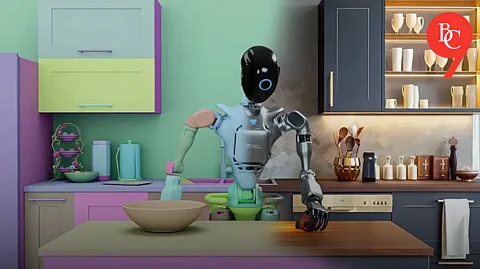

NVIDIA has launched Cosmos-Transfer1, a groundbreaking AI model designed to transform how robots and autonomous systems are trained. By generating photorealistic simulations that mimic real-world physics, this tool bridges the gap between virtual training and real-world deployment, addressing a critical challenge in robotics and autonomous vehicle development.
The model uses multimodal inputs like depth maps, segmentation data, LiDAR scans, and edge detection to create highly customizable simulations. These inputs allow developers to control scene composition, object placement, and environmental factors (e.g., weather, lighting) while preserving physical dynamics.
Unlike traditional simulations, Cosmos-Transfer1 ensures seamless transfer of learned behaviors from virtual to real environments. It adds intricate details like natural lighting, textures, and shading to synthetic data, making AI agents better prepared for real-world unpredictability.
Built on NVIDIA’s ControlNet framework, the model lets developers assign different weights to visual inputs (e.g., prioritize robotic arm motion over background details). This adaptability is crucial for applications like autonomous vehicles, where road layouts must stay consistent while weather conditions vary.
Integrated with NVIDIA Omniverse, the tool generates vast amounts of synthetic training data at scale. Developers can simulate rare edge cases (e.g., extreme weather, accidents) without real-world risks, accelerating AI training cycles. On NVIDIA’s latest GPUs, Cosmos-Transfer1 achieves real-time performance, generating 4K video in under 5 seconds. Scaling from 1 to 64 GPUs boosts speed by 40x, enabling rapid iteration for robotics and AV development.
NVIDIA’s Cosmos-Transfer1 marks a leap toward Physical AI—systems that interact intelligently with the real world. By merging generative AI with physics-based reasoning, it accelerates the development of reliable autonomous systems. As industries from logistics to healthcare adopt robotics, tools like Cosmos-Transfer1 will drive innovation while cutting costs and risks.
